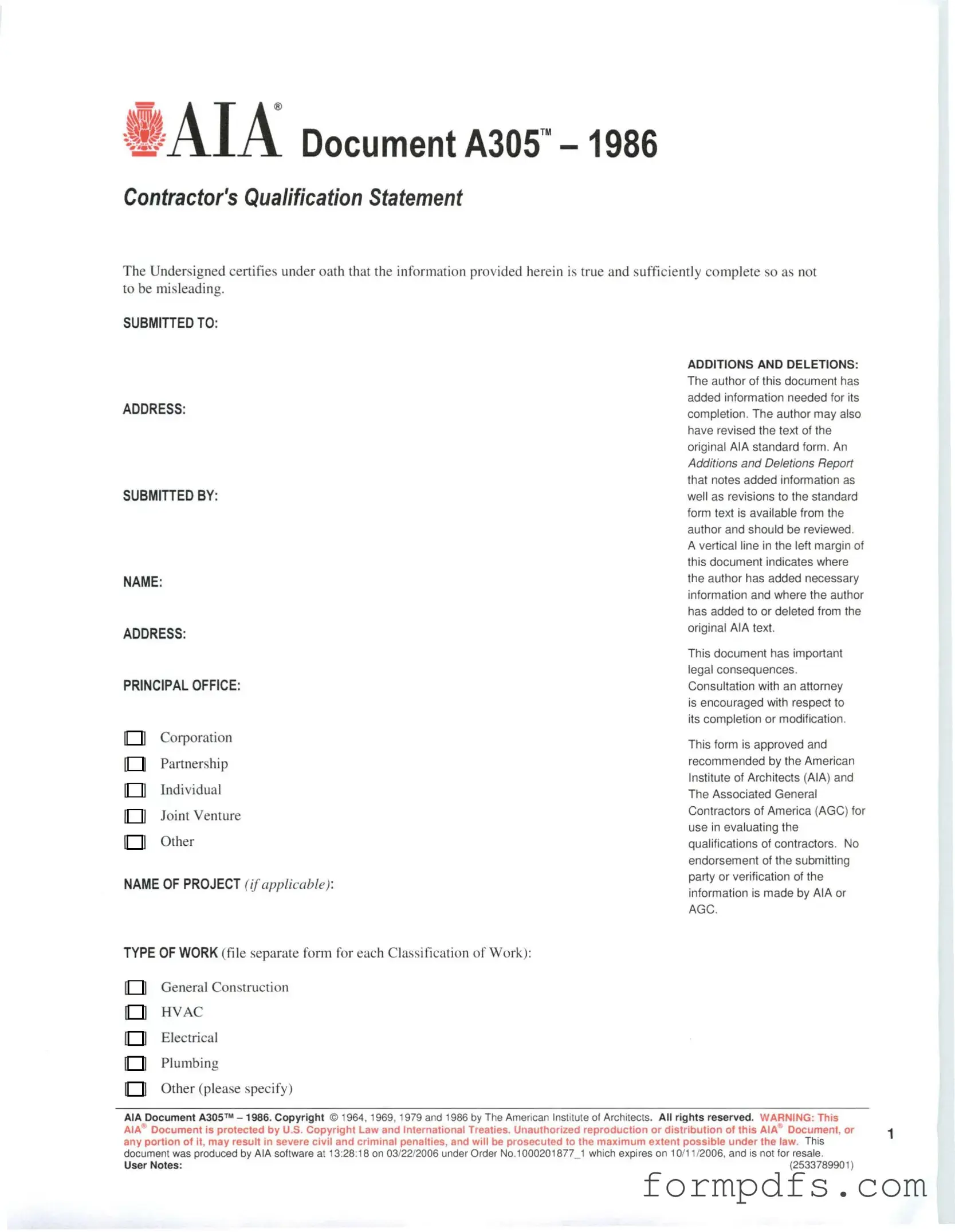What is the AIA A305 form?
The AIA A305 form, officially known as the "Contractor's Qualification Statement," is a document used by contractors to provide information about their qualifications and experience. It is often required by project owners or general contractors during the bidding process to assess a contractor's capabilities and reliability.
Who typically uses the AIA A305 form?
This form is primarily used by contractors seeking to demonstrate their qualifications to potential clients or project owners. General contractors, subcontractors, and construction managers may also use it when bidding on projects to showcase their experience and financial stability.
What information is included in the AIA A305 form?
The AIA A305 form includes sections for the contractor’s business structure, financial information, project experience, and references. It may require details about the contractor's workforce, equipment, and safety record. This comprehensive overview helps project owners evaluate the contractor’s suitability for the job.
Is the AIA A305 form legally binding?
No, the AIA A305 form is not a legally binding contract. It serves as a qualification statement that provides information about the contractor's capabilities. However, the information provided should be accurate and truthful, as misrepresentation could lead to disqualification from bidding or legal repercussions.
How is the AIA A305 form submitted?
The AIA A305 form can be submitted in various ways, depending on the requirements of the project owner or general contractor. It may be submitted electronically or in hard copy. Contractors should ensure they follow the specific submission guidelines provided in the bidding documents.
Can the AIA A305 form be modified?
While the AIA A305 form is standardized, contractors may add additional information or documentation as needed. However, any modifications should not alter the core structure of the form. It is essential to maintain clarity and ensure that all required sections are completed accurately.
How often should the AIA A305 form be updated?
Contractors should update the AIA A305 form regularly, especially when there are significant changes in their business, such as new projects, changes in financial status, or updates to workforce capabilities. Keeping the form current ensures that potential clients receive accurate information about the contractor's qualifications.
Are there any costs associated with using the AIA A305 form?
There are typically no direct costs associated with filling out the AIA A305 form itself, as it is a standard document provided by the American Institute of Architects (AIA). However, contractors may incur costs related to gathering the necessary information or documentation required to complete the form accurately.
Where can I obtain a copy of the AIA A305 form?
A copy of the AIA A305 form can be obtained from the American Institute of Architects (AIA) website or through various construction industry resources. It is advisable to use the most recent version to ensure compliance with current standards and practices.
